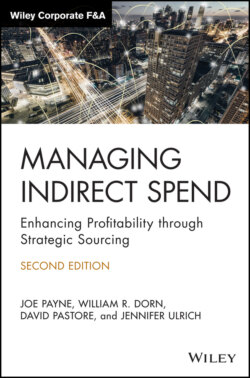Читать книгу Managing Indirect Spend - Joseph Payne, Joe Payne - Страница 31
SPEND ANALYSIS TOOLS
ОглавлениеPreviously in this chapter, we briefly discussed toolsets that assist companies in the spend analysis process. The market offers many such toolsets, but a detailed discussion of the merits and differences of each is beyond the scope of this book. Websites such as Spend Matters or Sourcing Innovation and research firms such as Gartner, AMR, and Forrester can provide detailed insights into the toolset best suited to your organization.
On their simplest level, spend analysis tools automate the process detailed earlier in this chapter. Data are uploaded into the tool, and information is cleansed and categorized based on criteria developed by the toolset provider. You can also develop customized rules based on your industry, the types of data being entered, and the type of analysis you want to see.
Besides saving a lot of time that would have been spent manually cleansing and categorizing data, these toolsets provide several other advantages.
First, spend analysis tools can be used over and over again on new data as you continue to make purchases. Once you have established that a supplier should be named and categorized a certain way, you can rerun reports with real‐time data. The manual process is based on data from a specific time and, subsequently, can become stagnant or outdated.
Another key advantage to spend analysis is the types of reporting you can get from the data throughout the initiative. In Chapter 8, we discuss monitoring implemented programs and methodologies to track success. Spend analysis tools can provide these tracking mechanisms and even help report savings produced through.
Depending on the amount of data and the goals of your initiative, you may want to consider utilizing a toolset during the spend analysis phase of the project.
We provide more information about spend analysis tools and their benefits in Chapters 11 and 16.
